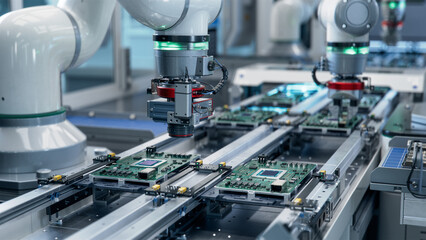
Suspecting infidelity can be one of the most emotionally overwhelming experiences a person can face. Uncertainty, doubt, and unanswered questions can affect mental health, relationships, and even professional life. When trust feels broken and clarity seems out of reach, discreet infidelity private investigators play a critical role in uncovering the truth with professionalism, confidentiality, and compassion. These specialized Infidelity Private Investigator services are designed to provide clear answers while protecting privacy and delivering peace of mind.
Infidelity investigations are not about assumptions or emotional reactions. They rely on factual evidence, proven investigative techniques, and ethical practices. By working with experienced private investigators, individuals can replace speculation with verified information, allowing them to make informed decisions about their future.
Understanding Infidelity Investigations
Infidelity investigations focus on gathering evidence related to suspected unfaithful behavior within a relationship. These investigations are conducted discreetly to avoid alerting the subject or escalating emotional tension. The primary goal is not confrontation, but truth.
Private investigators use a range of lawful and ethical methods to document activities, behaviors, and patterns that may indicate infidelity. The information collected is factual, time-stamped, and often supported by visual or written documentation. This ensures that findings are reliable and usable for personal clarity or legal purposes if needed.
Why Hire a Discreet Infidelity Private Investigator
Many individuals attempt to uncover the truth on their own, often leading to emotional distress or unreliable conclusions. Hiring a professional investigator offers significant advantages:
- Objectivity – Investigators approach each case without emotional bias, focusing solely on facts.
- Discretion – Professional surveillance and information gathering are conducted without drawing attention.
- Experience – Trained investigators understand behavioral patterns and know what details matter.
- Accuracy – Evidence is collected using proven methods that ensure credibility.
By relying on a qualified private investigator, clients avoid unnecessary confrontation, misinterpretation, or actions that could compromise their safety or privacy.
Signs That May Prompt an Infidelity Investigation
While every relationship is unique, certain behavioral changes may raise concerns and prompt individuals to seek professional assistance. These signs do not confirm infidelity on their own, but they can indicate a need for clarity:
- Sudden changes in routine or work hours
- Increased secrecy with phones, devices, or online activity
- Emotional distance or unexplained mood changes
- Unaccounted expenses or financial irregularities
- Frequent unexplained absences
A discreet infidelity investigation helps determine whether these behaviors are innocent or part of a larger pattern.
How Infidelity Investigations Are Conducted
Professional infidelity private investigators follow a structured process to ensure accuracy, discretion, and legal compliance. Each case is handled with care, respecting both the client’s concerns and ethical boundaries.
Initial Consultation
The investigation begins with a confidential consultation. During this stage, the investigator listens to concerns, gathers background information, and identifies objectives. This helps create a customized investigative plan tailored to the specific situation.
Strategic Planning
A clear strategy is developed based on schedules, behaviors, and potential risk factors. This plan determines the most effective methods for surveillance and evidence collection while minimizing exposure.
Surveillance and Evidence Gathering
Surveillance is one of the most common tools used in infidelity investigations. Investigators document movements, interactions, and activities without interfering or alerting the subject. Evidence may include photographs, videos, and detailed reports.
Documentation and Reporting
All findings are compiled into a comprehensive report. This report provides a clear timeline of events, supporting documentation, and factual conclusions. The information is presented in a professional and easy-to-understand format.
The Importance of Discretion and Confidentiality
Discretion is the foundation of infidelity investigation services. Clients trust private investigators with deeply personal matters, and confidentiality is always a top priority. Professional investigators follow strict protocols to protect client identities, case details, and collected evidence.
Confidential handling of information ensures that investigations do not escalate conflict, harm reputations, or compromise personal safety. This commitment to privacy allows clients to seek answers without fear of exposure.
Legal and Ethical Standards in Infidelity Investigations
Ethical practices are essential in private investigation services. Infidelity private investigators operate within legal boundaries and adhere to professional standards. This includes respecting privacy laws, avoiding unlawful recording methods, and ensuring evidence is obtained properly.
Working with a licensed and experienced investigator ensures that all findings are lawful and reliable. This is especially important if the information may later be used in legal proceedings such as divorce or custody discussions.
Emotional Benefits of Knowing the Truth
Living with uncertainty can be more damaging than confronting reality. Infidelity investigations provide clarity that allows individuals to regain control of their emotional well-being. Whether the findings confirm or disprove suspicions, having factual answers helps reduce anxiety and emotional strain.
Clear information allows clients to:
- Make informed decisions about their relationship
- Seek counseling or mediation with confidence
- Protect financial and personal interests
- Move forward with closure and peace of mind
The goal is not to create conflict, but to replace doubt with understanding.
How Infidelity Investigation Results Can Be Used
The information obtained from a private investigation can serve multiple purposes depending on the client’s needs:
- Personal clarity – Understanding the truth helps individuals decide their next steps.
- Relationship discussions – Factual evidence supports honest and grounded conversations.
- Legal preparation – Properly documented evidence may support legal counsel if required.
- Emotional closure – Knowing the truth helps individuals move forward without lingering doubt.
Professional investigators ensure that reports are thorough, factual, and suitable for various personal or legal uses.
Choosing the Right Infidelity Private Investigator
Selecting the right investigator is essential for achieving accurate and discreet results. When evaluating infidelity investigation services, consider the following factors:
- Proven experience in infidelity and relationship cases
- Commitment to confidentiality and discretion
- Clear communication and transparent processes
- Ethical and legal investigative methods
- Detailed and professional reporting
A trustworthy investigator prioritizes client well-being and provides realistic expectations from the beginning.
Common Myths About Infidelity Investigations
There are several misconceptions surrounding private investigation services. Understanding the truth helps individuals make confident decisions:
- Myth: Investigations always lead to confrontation
Reality: The focus is information, not confrontation. - Myth: Investigators invade privacy unlawfully
Reality: Ethical investigators follow strict legal guidelines. - Myth: Only extreme cases require investigators
Reality: Even minor concerns deserve clarity and peace of mind.
Infidelity investigations are about empowering individuals with truth, not escalating conflict.
Peace of Mind Through Professional Support
Discovering the truth about a relationship can be life-changing. Discreet infidelity private investigators provide a professional and compassionate pathway to clarity during emotionally difficult times. By relying on factual evidence rather than suspicion, individuals can protect their dignity, emotional health, and future.
Professional investigation services offer more than answers—they offer relief from uncertainty and the confidence to move forward. Whether the outcome confirms concerns or provides reassurance, the knowledge gained allows individuals to regain peace of mind and take control of their personal journey.
Suspecting infidelity is never easy, but living in doubt can be even harder. Discreet infidelity private investigators provide a trusted solution for those seeking clear answers without unnecessary exposure or emotional harm. Through ethical practices, confidentiality, and professional expertise, these services help individuals uncover the truth and restore balance in their lives.
When clarity matters most, professional infidelity investigation services offer the support, accuracy, and peace of mind needed to face the future with confidence.



